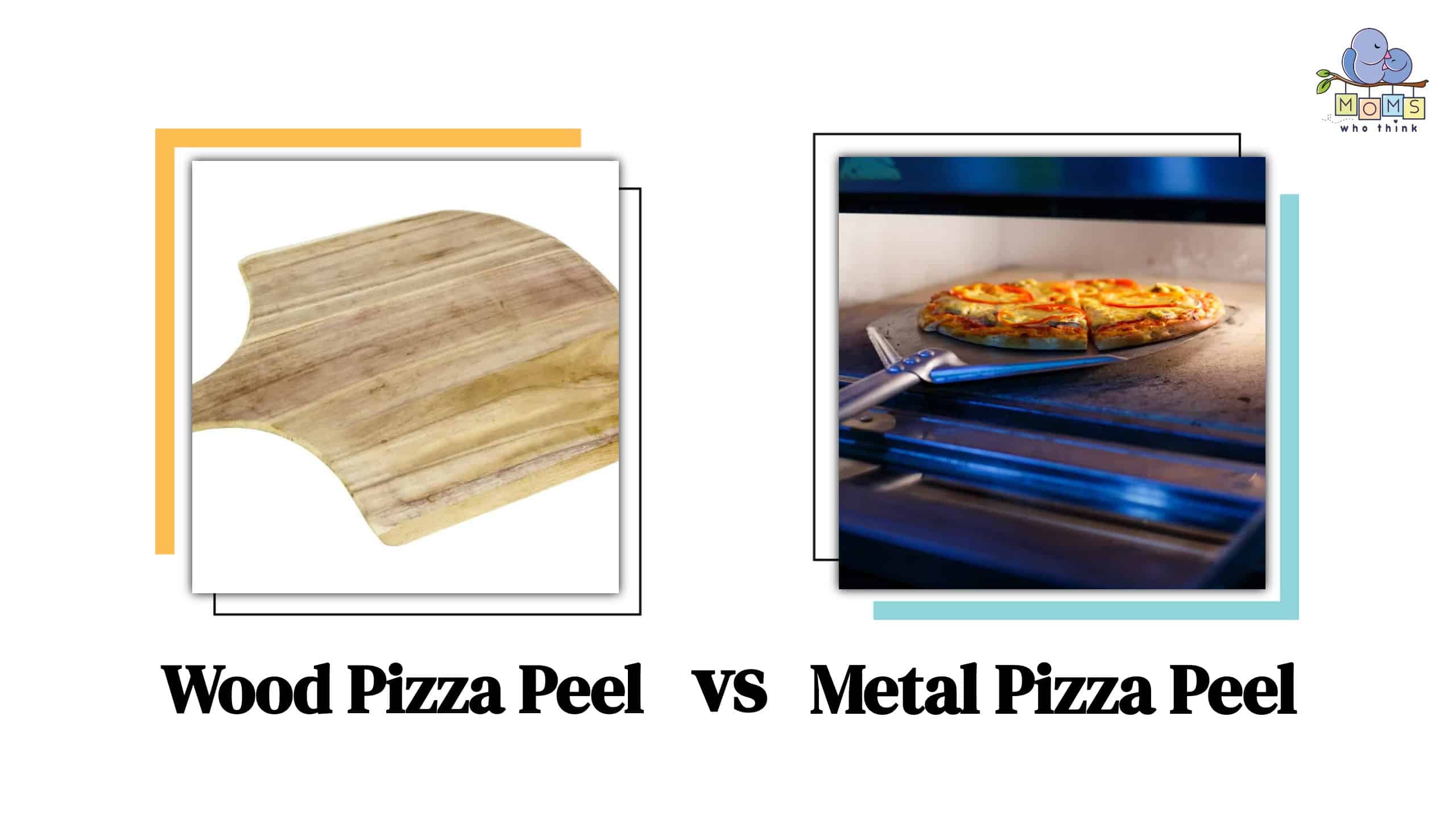A wood pizza peel is a thick and sturdy wooden tool used to slide the pizza into an oven while a metal peel is a lightweight tool used to turn the pizza and remove it from the oven.
Making pizza for most people is more like a tradition dating back to 600 B.C. It has a methodology and different styles. Baking your pizza is more like an art with pizza peels playing a crucial role in the process.
Ideally, you can’t bake pizza without a pizza peel. But which one is better? A wooden pizza peel or a metal peel?
A wooden pizza peel is the best choice when transferring the pizza to the oven, whereas, a metal peel is the right choice for turning and tossing your pizza in the oven.
In this article, we look at the difference between a wood pizza peel and a metal pizza peel, and which one is the best to use under which circumstances.
What is a Wood Pizza Peel?
A wooden pizza peel, as the name suggests, is a wooden tool used to place pizza in an oven. You can easily recognize the tool in most pizza joint kitchens. The peel features a long handle and a large flat paddle.
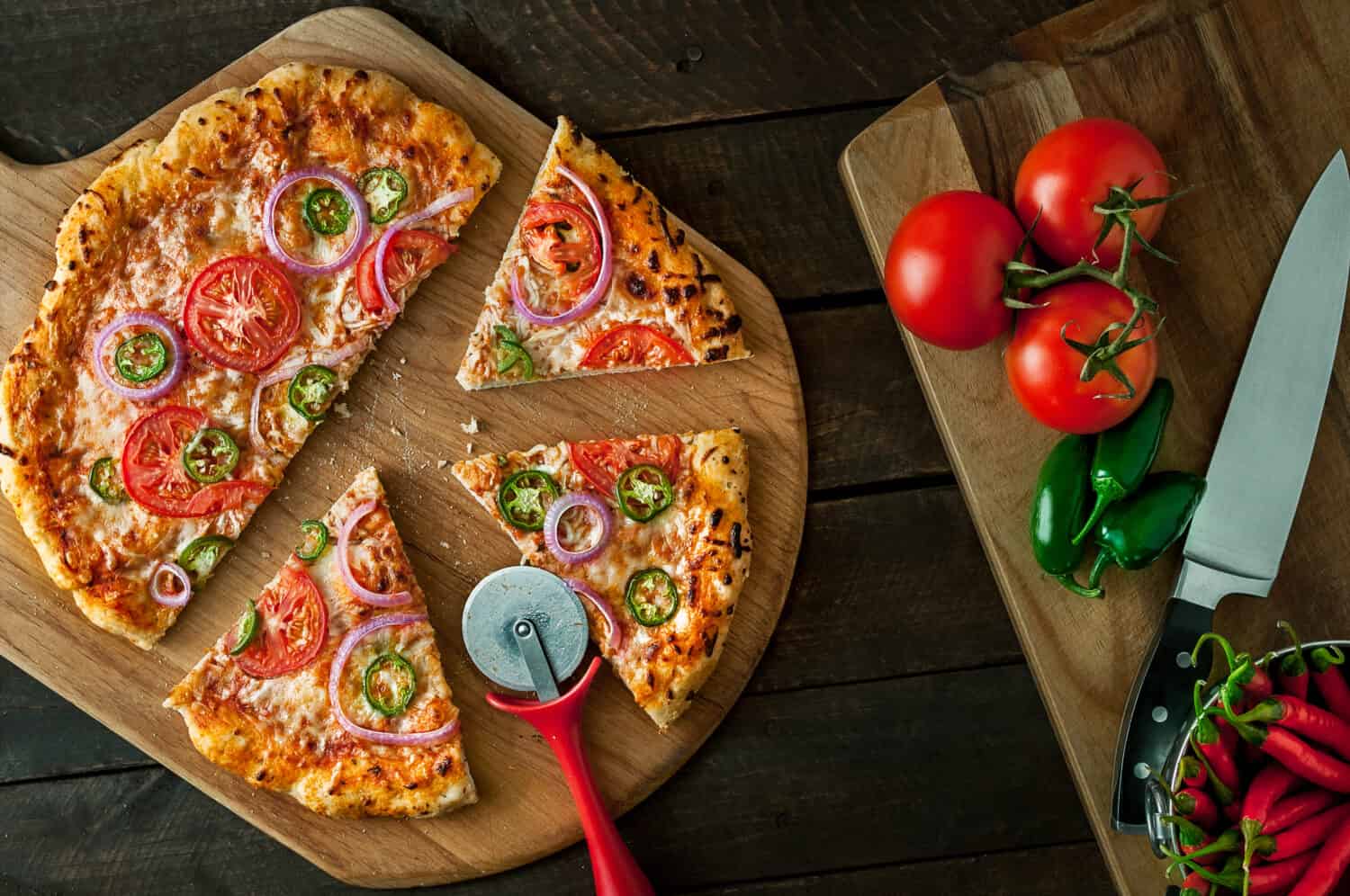
©Pete Broyles/Shutterstock.com
The pizza is placed on the paddle before carefully sliding it into the oven. A wooden pizza peel is a classic choice for transferring pizza into the oven. You might have probably noticed that pizza peels are not made of wood but metal.
But there is a reason why wood is classic and a great choice for transferring the pizza to the pizza stone or baking tray. Wood has a textured surface that prevents the pizza from sticking during the transfer.
Generally, traditional wood pizza peels are thick, heavy, and sturdy. However, you can now find modern wooden peels that are lightweight and thin. Such peels are usually made of bamboo and are ideal for persons packing less muscle.
What is a Metal Pizza Peel?
If you find a wooden pizza peel a little heavy and difficult to clean, then a metal pizza peel is another great option. Metal pizza peels feature blades made of aluminum or steel.
The blade of a metal pizza peel is very thin and lightweight to allow for easy tossing and turning of pizza inside the oven. Most feature a riveted handle for easy handling.
Unlike wooden peels, metal peels are extremely lightweight and easy to handle. They are also easy to clean and maintain. They have no pores like wood peels to absorb oils.
Metal pizza peels are ideal for turning, flipping, and getting the pizza out of the oven. The thin surface of the metal peel allows it to easily slide under the pizza. This is a beneficial feature when trying to check if the pizza is ready.
What’s the Difference Between a Wood and Metal Pizza Peel?
The difference lies in the material of the carrying surface. Wooden pizza peels are also longer than metal peels. The extra length is needed to safely slide in the pizza without burning yourself.
Let’s dive deep and check the main differences between these two pizza peels.
Length and Size
When it comes to size, wooden pizza peels tend to be larger and longer. A wooden pizza peel is typically longer than a metal peel. The extra handle length is essential to safely slide in the pizza without burning your hands.
Apart from the handle, wooden pizza peels tend to have a larger paddle to help prevent the pizza topping from falling off. However, both peels come in different sizes and lengths to match different oven sizes.
Materials
The construction materials used are another factor that sets these two apart. Wooden peels are majorly made of ash, birch, and maple. Metal peels, on the other hand, feature anodized aluminum or stainless steel construction.
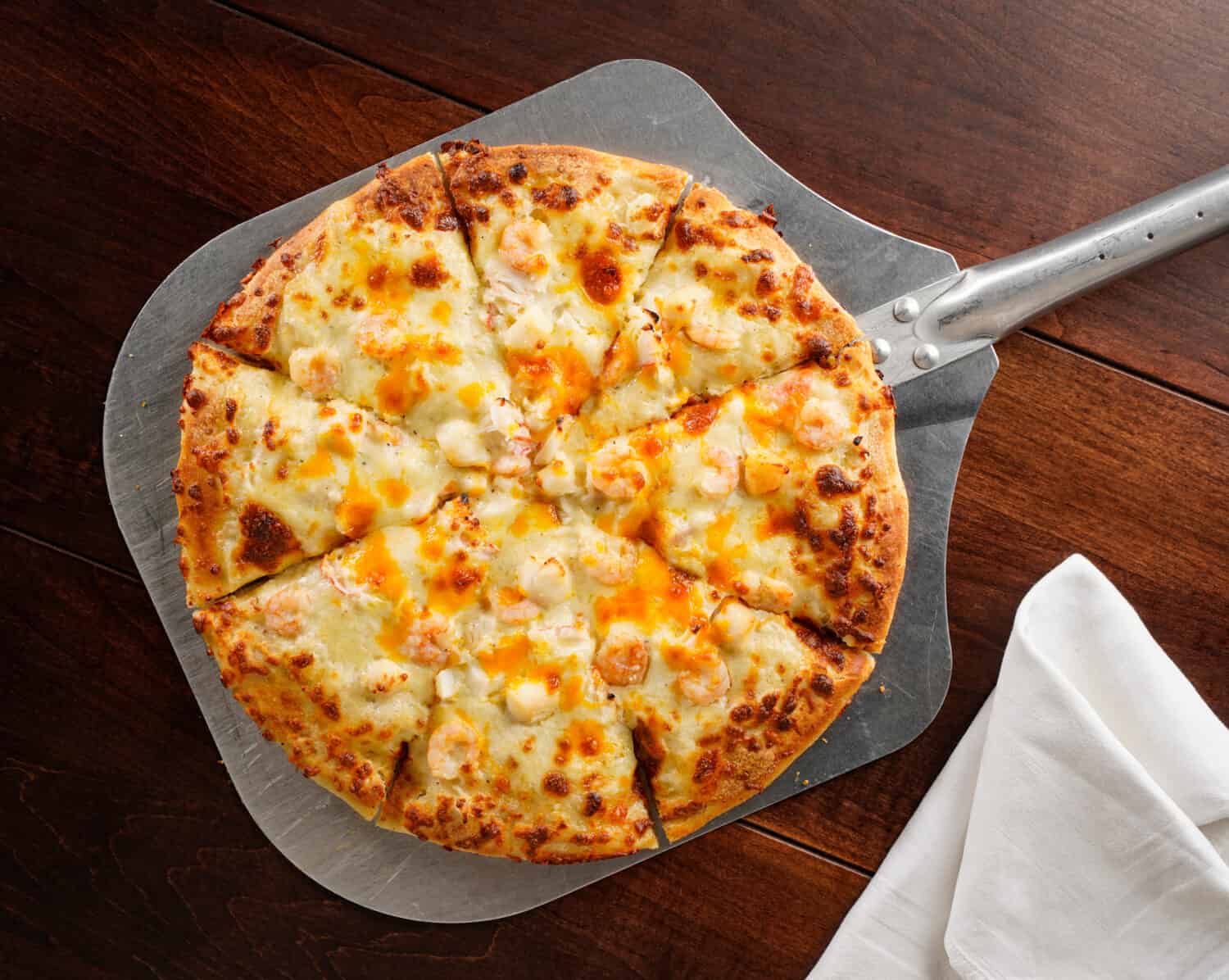
©Rainer Plendl/Shutterstock.com
While both materials are extremely durable, wood peels require some oiling regularly to prevent warping.
Weight
When comparing weight, wood peels are heavier compared to metal peels. The extra weight is necessary for wood to prevent them from catching fire. A thin and light wood may easily catch fire while inside the oven due to the high temperatures.
Metal peels are sturdy but lightweight and easy to handle. They feature a thin paddle that easily slides under the pizza for easy turning and tossing.
Surface Area
The exact surface area of a pizza peel depends on the pizza size you’re making. Generally, both wooden and metal peels come with a large surface area. However, a wooden pizza peel surface is thicker compared to metal.
A large surface area is ideal to prevent the pizza toppings from falling off when sliding the pizza into the pizza stone. You may also need a large metal paddle surface but one that matches your pizza size.
Maintenance
Wooden pizza peels are a lot more difficult to maintain than metal peels. Wood peels have pores where oils get absorbed, therefore, requiring more extensive cleaning. Wood can also absorb sauce and other stains making it a little difficult to clean.
They also need some oiling to prevent the wood from warping over time. Metal peels on the other are pretty easy to maintain. The peels don’t have any pores and will not absorb oils and stains. They make general maintenance quite easy.
Affordability
If you’re on a budget, wooden pizza peels are the real deal, compared to metal peels. While metal peels are more expensive, you can find some wood peels costing more than metal peels.
The exact price of metal and wooden pizza peels is dependent on the specific construction materials, size, and quality.
Wood Pizza Peel Alternatives
You can still transfer your raw dough into the oven without a wooden pizza peel. Below are some great alternatives to use.
- Cutting board/Serving Splatter: Yes, the cutting board in your kitchen can help transfer your pizza into the oven. Consider cutting boards with handles to avoid getting burned. Most cutting boards are rectangular which affects the pizza's shape. Also, avoid plastic chopping boards as they can melt when in contact with a hot pizza stone.
- Parchment paper: This may work pretty well in transferring the pizza to your oven. Set the parchment paper on a flat surface and sprinkle some flour to avoid the dough from sticking. Place the stretched dough ball at the center and roll it into a perfect circle. Parchment papers are designed for baking and can withstand high oven temperatures.
- Rimless Cookie Sheet: A rimless cookie sheet can also work as a wood pizza peel substitute. The lack of a rim helps slide off the pizza into the pizza stone.
- Upside-down rimmed baking sheet: A rimmed baking sheet can be used when turned upside down. Place the dough on the upside surface, open the oven, and grab the pizza with one hand into the pizza stone.
- Stiff cardboard or wood: You can also use stiff cardboard to transfer your dough. If using cardboard consider the backside which is stiffer.
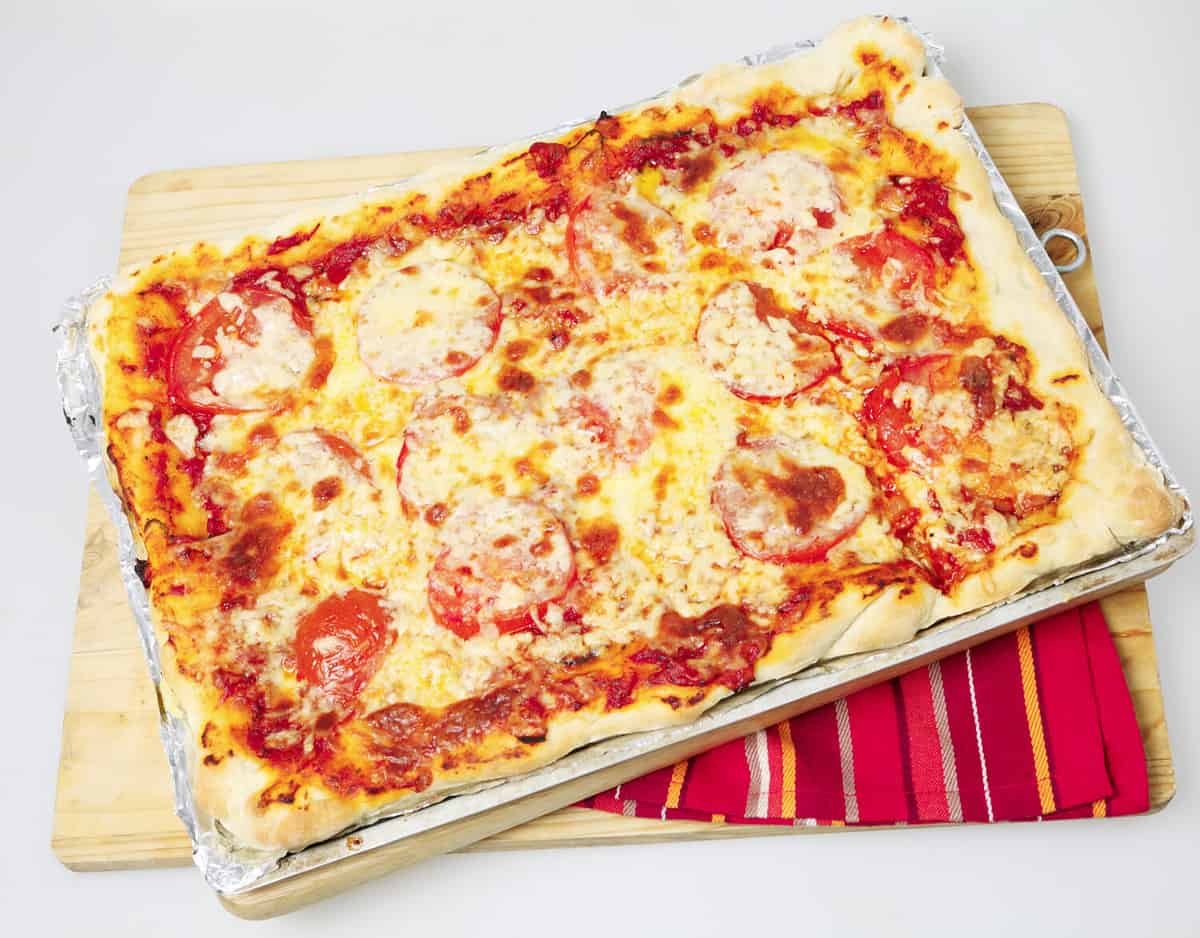
©Paul Cowan/Shutterstock.com
Best Metal Pizza Peel Substitutes
When looking to turn, toss or remove your pizza from the oven, a metal peel is needed. But when none is in sight, there are substitutes you can use. Below are some alternatives.
- Serving platter: If you have a serving platter in your kitchen, it can be of great use in turning and flipping your pizza. Make sure the platter is thin and has a handle for easy use.
- Metal spatula: A metal spatula may be used to remove the pizza from the oven. Slide the spatula under the pizza and check if it's cooked. Depending on the spatula surface, you can then slide the pizza out and place it on a plate.
- Large plate without a rim: You can also use a large plate without a rim to remove the pizza from the oven. However, you must first pull out the oven rack with the pizza stone on it. Once the rack is out, place your plate over and move the pizza onto the plate. Wearing heat gloves helps prevent burns.
- Consider baking your pizza without an oven: Pizza can be made effortlessly on the fry pan.
Can you Substitute a Wood Pizza Peel for a Metal Pizza Peel?
You can use a wood pizza peel in place of a metal pizza peel, but it’s not the best option. A wooden pizza peel is thick and specifically designed to transfer pizza into the oven.
A metal pizza peel is designed thinly to easily slide under the pizza. So if you’re going to use a wooden pizza peel to flip the pizza, getting it under the pizza is going to be a challenge. This is due to the extreme thickness of the wooden peel.
It may be kind of troublesome getting a thick paddle under your pizza. You can only do it with the help of heat gloves which is another hassle. But you can still find a few modern wooden peels that are thin enough to get under your pizza.
As a general rule, when removing or flipping pizza, the thinner the pizza peel, the easier it is to use. This is the case with most metal peels which are thinner and sturdier.
An ideal thickness is usually 1mm to 3mm. If they get thinner than this, the carrying surface may become flimsy and bend when removing heavier pizzas. The last thing you’d want is your pizza falling to the floor!
Ideally, having two pizza peels is the best way to add and remove pizza from the oven.
Which Is Better Wood or Metal Pizza Peel?
It is difficult comparing both pizza peels and choosing the best. These are two different peels designed to serve different purposes. It’s more like comparing mangoes and oranges.
A wooden pizza peel is for transferring pizza to the oven while a metal peel is for turning and tossing the pizza.
Raw pizza dough will stick to a metal surface more than a wooden surface. So it makes sense to use a wooden peel to transfer the dough into an oven. Wood features a rougher surface that allows air to flow underneath. This prevents the dough from sticking to the paddle.
As we’ve explained above, the thickness of wood paddles makes it difficult to get it under the pizza for tossing. Instead, a metal pizza peel with a thin paddle is preferred for this purpose.
Do I Really Need Two Pizza Peels?
Ideally, the best choice is to have both wooden and metal pizza peels. This way, you get to transfer your pizza into the oven with a wooden peel and remove it using a metal peel.
But wait, there is a third option! A perforated pizza peel can perform both tasks.
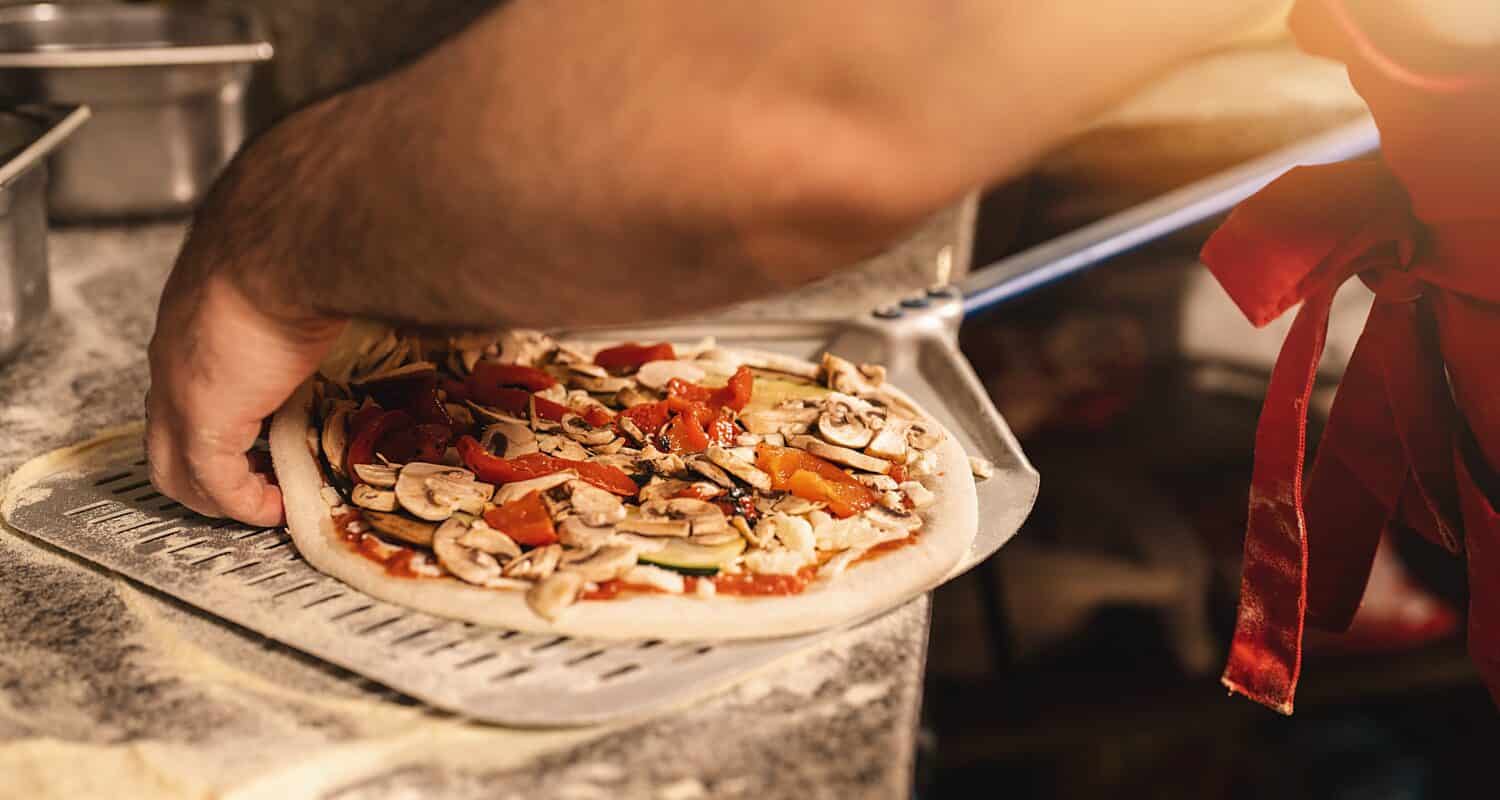
©r.classen/Shutterstock.com
This is a thin peel but with perforations to prevent raw dough from sticking to the dough. It serves the functions of a wooden peel and a metal peel.
Perforated peels are metal peels but with holes. The perforations help air flow through, preventing the raw dough from sticking. The small holes under the pizza allow airflow preventing a vacuum under the pizza.
It is a much more versatile peel that serves both functions. The holes also help reduce friction making it stick-resistant. The holes also play a crucial role in reducing the amount of excess flour in the dough. Flour in your dough will burn in the oven and create a crust and an unpleasant smell.
But there is a drawback when using perforated pizza peels. The dough sinks into the holes when it’s too heavy or left on the paddle for too long. If this happens, it becomes difficult to get the dough into the oven.
When using a perforated pizza, you need to work rather fast and transfer the dough before the dough sinks into the holes. If you bake pizza regularly, getting both peels is the best idea.
Overall, having the right pizza peel is important if your goal is achieving an authentic Neapolitan pizza.
Care and Maintenance
Wooden Pizza peel
Wooden peels are generally harder to clean, care for, and maintain than metal peels. This is because wood is highly susceptible to warping when it gets wet for too long.
The best way to care for a wood peel is to limit exposure to water for too long. Make sure you don’t place the peel in a dishwasher as this can cause cracks.
Excess pizza dough on the peel paddle should be scraped using a dough scraper. Consider a plastic dough scraper. Metal scrapers can easily scratch the wood surface creating holes for bacteria to grow.
Next, get a soft damp cloth to clean off the peel. Apply very little water and thoroughly dry the peel before storing it.
Never use a wooden peel as a chopping board as this can damage the wooden surface. Cuts from the knife can make the peel break easily.
Lastly, apply some mineral oil to the peel to help extend its lifespan. Oils help hydrate the peel, reducing the chances of warping and cracking. Apply the oils after every 1-3 months, depending on the frequency of use.
Metal Pizza Peel
Unlike wooden peels, metal peels are incredibly easy to clean and maintain. You can clean the peels the same way you clean your baking trays. Excess dough on metal peels easily slides off. This takes away the need for scraping.
Main Differences in a Wooden and Metal Pizza Peel
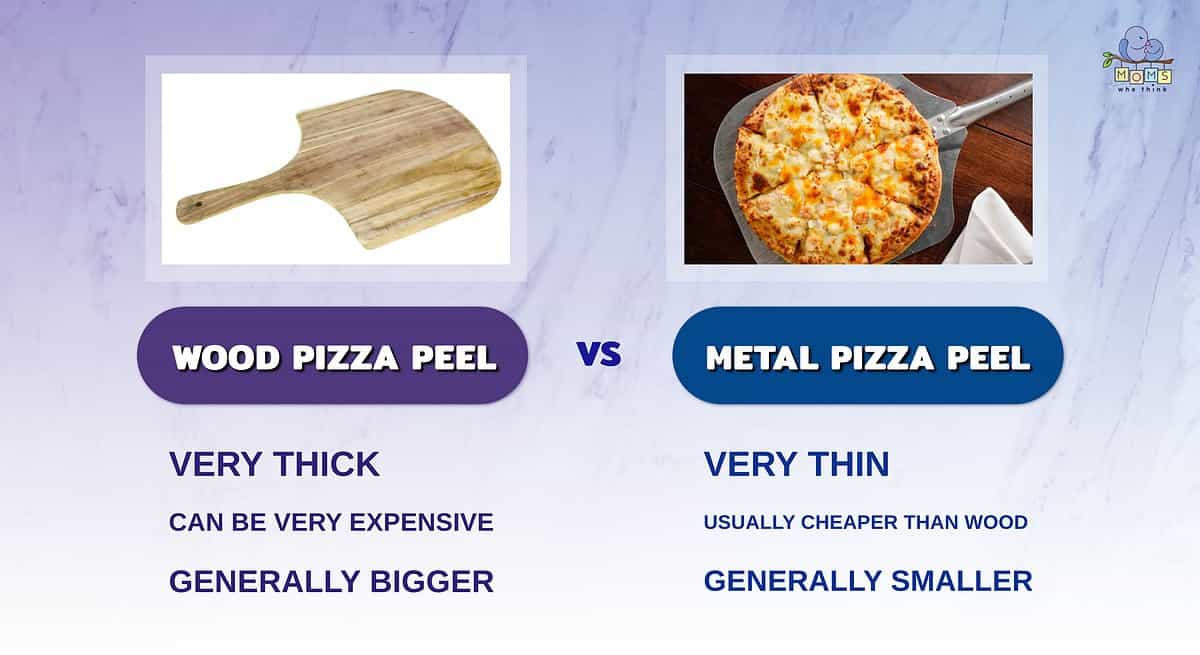
- The wooden peel is better for throwing the uncooked pizza in the oven.
- A metal peel is good for oven transfer.
- Legitimate wooden peels can be expensive.

Homestyle Beef Pan Pizza
Ingredients
- 13–3/4 ounces refrigerated pizza dough
- 1/4 pound 95% lean ground beef
- 3 Tablespoons finely chopped onion
- 1 cup pizza sauce
- 2 teaspoons Italian seasoning
- 2 cloves garlic, minced
- 1/8 teaspoon ground red pepper
- 1/2 cup sliced mushrooms
- 1 1/2 cups shredded mozzarella cheese
- 2 Tablespoons finely grated Parmesan cheese
Instructions
1. Preheat oven to 425°F. Lightly spray a 12-inch pizza pan with nonstick cooking spray.
2. Unroll pizza dough; press onto prepared pan, with edges slightly rolled. Prick dough all over with fork.
3. Bake 7 to 10 minutes or until lightly browned.
4. While crust is baking, brown ground beef with onion in large skillet over medium-high heat, stirring to break up meat. Drain fat.
5. Combine pizza sauce, Italian seasoning, garlic and red pepper in a small saucepan over medium heat; bring to a boil.
6. Reduce heat; simmer, uncovered, about 8 minutes or until desired consistency. Remove pizza crust from oven.
7. Spread tomato mixture evenly over pizza crust. Sprinkle with ground beef mixture and mushrooms. Sprinkle with cheeses.
8. Return pizza to oven and bake 5 to 8 minutes more, or until heated through.
